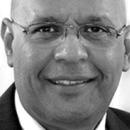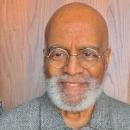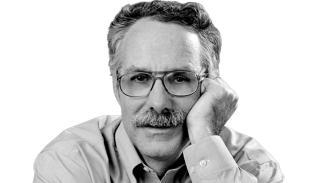
[OP-ED]: Making Medicaid great
MORE IN THIS SECTION
In the raging debate over the Affordable Care Act (Obamacare), this is a subject that neither Republicans nor Democrats dare touch. It’s an ominous omission.
Medicaid is the sleeping giant of U.S. health care. Created in 1965, it provides health insurance for the very poor. Here are some basic Medicaid facts:
-- It is the nation’s largest health insurance program by beneficiaries, with 68 million recipients compared with Medicare’s 55 million (Medicare provides insurance for the 65 and over population).
-- Medicaid’s costs are shared between the federal government (roughly 60 percent) and state governments (40 percent). In 2015, Medicaid spending totaled $545 billion compared with Medicare’s $646 billion, reports the Kaiser Family Foundation.
-- Although the Obamacare debate has focused on private insurance subsidized through health exchanges, the expansion of Medicaid -- adopting more liberal eligibility requirements -- resulted in the largest gain of insurance coverage, about 11 million people.
But the most significant Medicaid fact is this: Although three-quarters of Medicaid recipients are either children or young adults, they account for only one-third of costs. The elderly and disabled constitute the other one-quarter of recipients, but they represent two-thirds of costs
How could this be? Doesn’t Medicare -- not Medicaid -- cover the elderly and disabled? Well, yes, but there’s a giant omission: nursing home and other long-term care. Medicaid covers these for the poor elderly and disabled.
RELATED CONTENT
Here’s where the past and future collide. As the population ages, the people needing long-term care will soar. From 2015 to 2030, the number of Americans 85 and older will rise about 50 percent to 9 million, projects the Census Bureau. Many will end up in nursing homes, with high costs. The average health costs of Americans 85 and over are 2.5 times greater than for people 65 to 74, says the Center on Budget and Policy Priorities, a research and advocacy group for the poor.
At the federal level, spending on the elderly -- mainly for Social Security, Medicare and Medicaid -- is already crowding out non-elderly spending, as the Trump administration’s new 2018 budget shows. Now pressures are tightening on states.
Because they pay 40 percent of Medicaid, its escalating costs compete directly with state and local services -- schools, roads, police, parks, sanitation -- and lower taxes. Medicaid’s “entitlement” nature means that anyone who qualifies for support must get it. By contrast, schools and other state services get what seems affordable. Slowly, Medicaid is usurping state priorities. Medicaid now claims nearly one-fifth of states’ general revenues, reports Robin Rudowitz of the Kaiser Family Foundation. Under present law, the squeeze will worsen.
Fortunately, there’s a sensible solution to this problem. It isn’t to gut care for the elderly. Instead, we should transfer Medicaid’s long-term care to the federal government, which would pay all costs, probably by merging with Medicare. In return, the states would assume all Medicaid’s costs for children and younger adults, give up some or all of their federal aid for K-12 schools and, if needed, trim other federal grants to ensure financial neutrality.
At the outset, there would be no obvious winner. For every dollar of higher federal spending on long-term care, there would be a dollar offset in lower spending on medical care for children and younger adults plus less generous federal grants. But over time, this swap of responsibilities would make sense for everyone. It would concentrate oversight for the young at the state and local level while aid to the elderly and disabled would be firmly lodged at the federal level.
Consider. For states, spending would no longer be tied to demographic trends -- an aging society -- they can’t change. Controlling schools and a child-centered Medicaid, they would be in the best position to fight child poverty, which is arguably the nation’s most serious social problem. The rising costs of long-term care, a national problem, would not handcuff them.
As for the federal government, it would control all major programs for the elderly and disabled. The present splintering is undesirable. It means that a fifth of Medicare recipients are so-called “dual eligibles,” belonging also to Medicaid. This raises costs and complicates caregiving. If benefits for the elderly are to be cut (say, by raising eligibility ages), that job is best done if the federal government can choose from all programs for the old.
Unfortunately, there is little support for this sort of swap. Commentators (including this reporter) periodically propose it and praise its benefits. But national politicians seem uninterested. They prefer instead to bleed the states.







LEAVE A COMMENT:
Join the discussion! Leave a comment.